Choosing the Right Roof for Your Colorado Home
Choosing the right roof for your Colorado home is a critical decision not only for its appearance but also for its ability to protect your household, increase its energy efficiency, and withstand the unique weather conditions that define the Colorado climate. Colorado’s varied landscapes, ranging from the majestic peaks of the Rocky Mountains to the arid plains of the Eastern Slope, are accompanied by equally varied weather patterns. These weather patterns can range from heavy snowfall and freezing temperatures in the winter to intense sun and occasional hailstorms in the summer.
For homeowners and business owners who may not be familiar with the intricacies of roofing materials and construction, navigating the options can seem daunting. However, the importance of this choice cannot be overstated. The right roof does more than just cover your home; it is critical in its structural integrity, energy efficiency, and overall value.
In this article, we will guide you through the essential considerations and options available to ensure that your property is equipped with a roof that is not only aesthetically pleasing but also durable and suitable for Colorado’s challenging climate. Whether you’re building a new home, replacing an old roof, or simply exploring ways to enhance your property’s resilience, understanding how to choose the right roof is the first step towards securing your investment and ensuring the comfort and safety of those within.
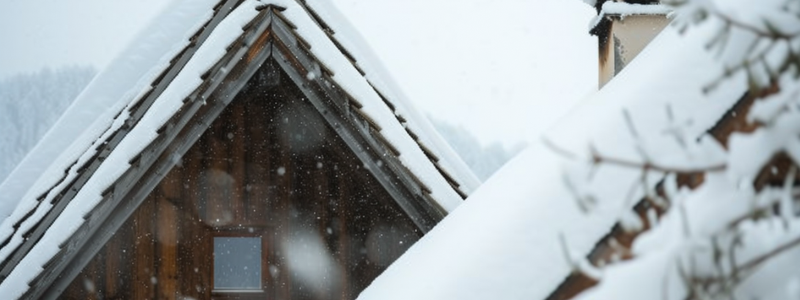
Understanding Colorado’s Climate
When embarking on choosing the right roof for your Colorado home, comprehending the state’s unique climate is paramount. Colorado’s weather is marked by its diversity and extremity, which significantly impacts the selection of roofing materials and designs. Here are the key climate characteristics and their implications for roofing:
- Heavy Snowfall and Freezing Temperatures:
- Winter in Colorado can place a significant weight load on roofs due to heavy snowfall.
- The freeze-thaw cycle can damage roofing materials, as water expands when it freezes after seeping into cracks.
- Intense UV Exposure:
- Summer brings intense sun, which can degrade many roofing materials, reducing their lifespan.
- Sudden Hailstorms:
- Hail can cause immediate and severe damage to roofs not designed to withstand such impacts, leading to leaks and structural problems.
- High Winds:
- Strong gusts can lift or remove roofing materials that are not properly secured or inherently less resistant to wind uplift.
Given these conditions, the choice of roofing material and construction must be made with a thorough understanding of Colorado’s climate. The right roof will:
- Protect your home from the elements.
- Contribute to energy efficiency by maintaining a stable internal temperature, regardless of external weather conditions.
We’re thrilled to help Colorado homeowners make informed roofing decisions by understanding the unique local climate. Our expertise ensures you’ll have materials and designs that can withstand any weather challenge.
Types of Roofing Materials Suitable for Colorado Homes
Choosing the right roof for your Colorado home involves selecting materials that can withstand the state’s diverse and extreme weather conditions. Here’s a breakdown of the most suitable roofing materials for Colorado homes, along with their benefits and drawbacks:
- Asphalt Shingles:
- Benefits: Cost-effective, widely available, and come in various colors and styles. Good resistance to wind and hail when installed with proper reinforcement.
- Drawbacks: Shorter lifespan compared to other materials and can be prone to damage from extreme temperature fluctuations.
- Metal Roofing:
- Benefits: Exceptionally durable, long lifespan, excellent for snow shedding, and energy-efficient. Resistant to hail damage and high winds.
- Drawbacks: Higher initial cost and requires professional installation for optimal performance.
- Slate Roofing:
- Benefits: Offers a natural look, extremely durable, long lifespan, and fire-resistant. Performs well in heavy snow and hail conditions.
- Drawbacks: Very heavy, requiring additional structural support, and is one of the most expensive roofing options.
- Tile Roofing (Clay or Concrete):
- Benefits: Durable, long lifespan, excellent in high-heat conditions, and offers a unique aesthetic. Good resistance to hail and fire.
- Drawbacks: Heavy like slate and can be expensive. Requires a reinforced roof structure to support the weight.
- Composite Roofing:
- Benefits: Made from a mixture of materials, can mimic the look of wood, slate, or tile. Lightweight, durable, and with a moderate cost. Good resistance to fire, wind, and hail.
- Drawbacks: Lifespan varies with quality, and not all composite materials offer the same level of durability.
When selecting a roofing material for your Colorado home, consider:
- Durability: The material’s ability to withstand heavy snow, hail, and UV exposure.
- Weight: Ensure your home’s structure can support the weight of materials like slate or tile.
- Cost: Factor in both the initial installation cost and the long-term maintenance and replacement costs.
- Aesthetic: Choose a material that complements your home’s architectural style and the surrounding landscape.
Each material offers a unique set of advantages and challenges, making it crucial to weigh these factors carefully. The right choice will balance durability, weight, cost, and aesthetic appeal, ensuring your roof is equipped to protect your home against Colorado’s harsh climate while enhancing its overall value and appearance.

Factors to Consider When Choosing the Right Roof
When selecting the right roof for your Colorado home, several critical factors must be taken into account to ensure that your choice not only meets your aesthetic preferences but also stands up to the state’s challenging weather conditions. Here’s a breakdown of these key considerations:
- Durability and Weather Resistance:
- The material’s ability to withstand Colorado’s heavy snow, hail, high winds, and intense UV exposure is paramount. Opt for materials known for their resilience in these conditions.
- Energy Efficiency:
- Consider how well the roofing material insulates your home and reflects sunlight, contributing to lower heating and cooling costs. Materials that offer better insulation and reflectivity can significantly reduce energy expenses.
- Aesthetic Appeal:
- The roof should complement your home’s architectural style and the surrounding environment. The right material and color can enhance your home’s curb appeal and potentially increase its market value.
- Cost:
- Evaluate both the upfront installation costs and the long-term maintenance and replacement costs. While some materials may have a higher initial cost, their durability and lifespan could offer savings over time.
- Weight:
- Ensure that your home’s structure can support the weight of the chosen material. Heavy materials like slate and tile may require additional structural reinforcement, adding to the project’s cost.
- Local Building Codes and HOA Regulations:
- Be aware of any local building codes or homeowners association (HOA) regulations that may restrict the use of certain roofing materials or colors in your area.
- Sustainability:
- For homeowners concerned with environmental impact, consider roofing materials that are recyclable and have a lower carbon footprint. Some materials also contribute to a cooler roof, reducing the urban heat island effect.
- Maintenance Requirements:
- Understand the maintenance needs of each material. Some require more frequent inspections and repairs to maintain their integrity and appearance over time.
Homeowners and business owners should carefully consider various factors before deciding on a roofing option that balances practicality with personal preference. It’s important to consult with a professional roofing contractor who understands the local climate and building codes to get valuable insights and make an informed decision that best fits your specific needs. Remember, we are here to help you with your roofing needs.
Maintenance and Longevity
The maintenance and longevity of your roof are crucial factors to consider when choosing the right roof for your Colorado home. A well-maintained roof not only extends the life of your investment but also ensures your home remains safe and energy-efficient. Here are key points to understand about maintaining different roofing materials and how they impact the longevity of your roof:
- Regular Inspections:
- Conducting regular inspections, especially after severe weather events, can help identify and address minor issues before they escalate into major problems. It’s recommended to inspect your roof at least twice a year.
- Cleaning and Maintenance:
- Different materials require different levels of maintenance. For instance, asphalt shingles may need periodic cleaning to remove algae or moss, while metal roofs might need checks for rust or corrosion. Tile roofs should be inspected for cracked or broken tiles, and debris should be cleared to prevent water buildup.
- Impact of Colorado’s Climate:
- The longevity of roofing materials in Colorado can be significantly affected by the state’s climate. Materials that are resistant to UV rays, hail, and thermal cycling (the process of expanding and contracting due to temperature changes) tend to have a longer lifespan.
- Expected Lifespan of Materials:
- Asphalt shingles, the most common roofing material, typically last between 15 to 30 years, depending on the quality and maintenance.
- Metal roofs can last 40 to 70 years, with some materials lasting even longer with proper care.
- Slate and tile roofs offer exceptional longevity, often exceeding 100 years, but require a strong structural foundation due to their weight.
- Composite roofing materials have varied lifespans, generally between 30 to 50 years, depending on the quality and maintenance.
- Preventative Measures:
- Taking preventative measures, such as proper insulation and ventilation in your attic, can prevent ice dams and reduce wear on your roof.
- Immediate repair of minor damages, like replacing missing shingles or sealing leaks, can extend the life of your roof.
- Professional Maintenance:
- While homeowners, professional inspections and repairs can perform some maintenance tasks ensure that your roof remains in optimal condition. Professionals can spot potential issues that are not obvious to the untrained eye.
Understanding the maintenance requirements and expected longevity of your chosen roofing material is essential for making an informed decision. A roof that is well-suited to Colorado’s climate and properly maintained can provide decades of protection for your home, making it a wise investment in the long-term safety and efficiency of your property.
Professional Installation and Choosing the Right Contractor
Ensuring professional installation and choosing the right contractor are critical steps in choosing the right roof for your Colorado home. A high-quality roofing material can only perform to its fullest potential when installed correctly. Here are essential tips and considerations for selecting a roofing contractor and ensuring the installation process meets the highest standards:
- Research and Referrals:
- Start by researching local roofing contractors with a solid reputation for quality workmanship. Ask for referrals from friends, family, or neighbors who have had roofing work done recently.
- Check Credentials and Experience:
- Verify the contractor’s credentials, including licensing and insurance. Ensure they have experience with the specific type of roofing material you’re considering. Specialized materials like slate or tile require specific expertise.
- Look at Reviews and Past Work:
- Check online reviews and ask for references to assess the contractor’s track record. If possible, view previous installation projects to gauge the quality of their work.
- Get Multiple Quotes:
- Obtain quotes from several contractors to compare prices, but remember that the lowest bid isn’t always the best. Consider the quality of materials, scope of work, and warranty offered.
- Ask About the Installation Process:
- Discuss the installation process in detail. Understand the timeline, the steps involved, and how the contractor plans to address any potential challenges specific to your property or chosen material.
- Understand the Warranty:
- Ensure you understand the warranty on both the materials and the installation. A reputable contractor will offer a warranty that covers both aspects and clearly explains what is included and any exclusions.
- Communication and Professionalism:
- Choose a contractor who communicates clearly and professionally. They should be willing to answer your questions and provide updates throughout the project.
- Permits and Regulations:
- A professional contractor will handle all necessary permits and ensure that the installation complies with local building codes and regulations, including any specific to Colorado’s climate and environmental conditions.
- Post-Installation Support:
- Inquire about the contractor’s policy for handling any issues that may arise after the installation is complete. Reliable post-installation support is a sign of a reputable contractor.
Selecting the appropriate roofing contractor is just as important as choosing the right roofing material. A competent and experienced contractor guarantees that your roof is installed to the highest standards, providing the best possible protection and durability for your Colorado home. By following these guidelines, you can make an informed decision and have complete peace of mind, knowing that your roofing project is in capable hands.
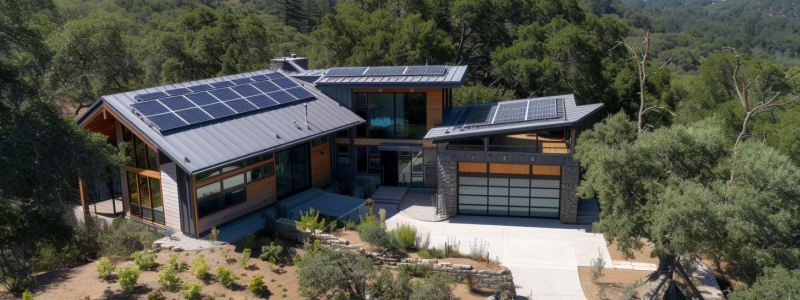
Final Advice
Choosing the right roof for your Colorado home is a multifaceted decision that requires careful consideration of the state’s unique climate, the durability and energy efficiency of various roofing materials, and the importance of professional installation. By understanding the specific challenges posed by Colorado’s weather, from heavy snowfall and hail to intense UV exposure, homeowners can select materials that offer the best protection and longevity for their homes.
The selection process involves balancing factors such as durability, aesthetic appeal, energy efficiency, and cost, while also considering the weight of the materials and local building codes. Materials like asphalt shingles, metal roofing, slate, and tile each have their advantages and maintenance requirements, making it crucial to choose a material that aligns with your needs and preferences.
Professional installation by a reputable contractor like B&M Roofing is paramount to ensure that the roof is installed correctly and performs as expected. Homeowners should conduct thorough research, check credentials, and communicate clearly with potential contractors to ensure the best outcome for their roofing project.
Why us?
We are thrilled to help you find the perfect roof for your Colorado home! Our team understands the importance of balancing style with functionality, which is why we prioritize durability, energy-efficiency, and cost-effectiveness. Our expert approach to selection and installation ensures that your roof will be a wise investment, safeguarding your home and increasing its value for years to come. With our help, you can trust that your roof will not only look great, but also stand up to the toughest weather conditions.
Average Roof Life
Welcome to the world of roofing, where understanding the ‘average roof life’ is not just about numbers—it’s about peace of mind for your home or business in Colorado. The term ‘average roof life’ refers to the typical duration a roof can be expected to last before it needs significant repair or replacement. This is more than just a statistic; it’s a crucial piece of knowledge that safeguards your property against the elements and helps you plan for the future.
Why is knowing about roof lifespan so important? For starters, it’s a key factor in maintaining the safety, aesthetics, and value of your property. A well-maintained roof is like a trusty helmet for your home—it’s the first line of defense against snow, rain, and the bright Colorado sun. Plus, being aware of your roof’s lifespan helps you budget for repairs or replacement, avoiding the sticker shock that can come with sudden roofing emergencies.
In Colorado’s dynamic climate, where the weather can be as unpredictable as a Broncos game, understanding the average life of your roof is particularly vital. It’s not just about enduring the present; it’s about being prepared for the future. So, let’s embark on this journey to uncover the mysteries of roof longevity and ensure that the only thing going over your head is a roof that’s built to last.
Remember, a solid roof overhead is not just a part of your building; it’s the guardian of your peace of mind. And that’s a responsibility we take as seriously as you do.
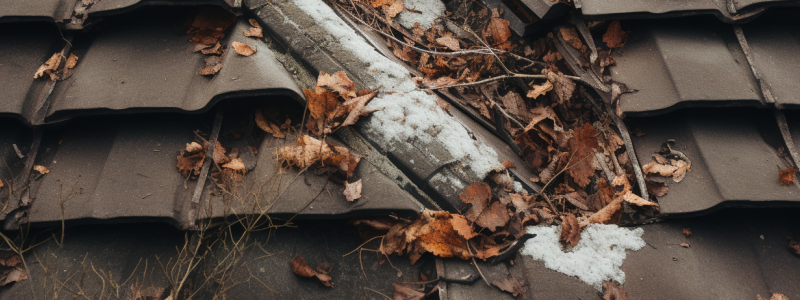
Factors Affecting Roof Life
When it comes to the longevity of your roof, several key factors come into play, especially in a place like Denver or Arvada, where the weather can be as varied as the landscape. Let’s break down these elements:
- Climate: Colorado’s unique climate, characterized by its dry air, high elevation, and sudden temperature shifts, can take a toll on roofing materials. The intense UV exposure at high altitudes can degrade roofing materials more quickly than in other regions.
- Material Quality: The quality of the materials used in your roof is non-negotiable. Higher quality materials may come with a steeper price tag, but they often translate to a longer lifespan for your roof.
- Installation: A roof is only as good as its installation. Properly installed roofs can withstand Denver’s unpredictable weather patterns much better than those that are not.
- Maintenance: Regular maintenance is the key to longevity. This includes inspections, prompt repairs, and cleaning. Neglect can lead to premature aging of your roof.
- Other Factors: These include the roof design, the color of the roofing materials (darker colors absorb more heat), ventilation, and insulation quality.
For Denver homeowners, understanding these factors is crucial. According to a local roofing expert, roofs in Colorado can last between fifteen and thirty years, but this range can vary widely based on the factors mentioned above. It’s a testament to the importance of not just the materials chosen, but also the quality of installation and ongoing maintenance.
Remember, while the initial cost is an important consideration, the longevity and performance of your roof in Denver’s climate are what truly determine its value over time. Investing in quality materials and workmanship now can save you from costly repairs or replacements down the line.
Types of Roofing Materials and Their Lifespan
Choosing the right roofing material is a decision that homeowners in Denver will live with for decades. Each material comes with its own average roof life expectancy, and here’s a comparison to help you weigh your options:
- Composite Asphalt Shingles: These are among the most common roofing materials due to their cost-effectiveness and ease of installation. They can last anywhere from 15 to 40 years, with the lifespan varying based on the quality of the materials and maintenance.
- Architectural Shingles: A step up from the standard asphalt shingle, architectural shingles offer a longer lifespan of 30 to 50 years due to their durability and quality.
- Clay Tiles: Known for their classic aesthetic and durability, clay tiles can last over 50 years. They are excellent for weather resistance, which is a significant consideration in Denver’s climate.
- Metal Roofing: Metal roofs are becoming increasingly popular due to their longevity and resistance to extreme weather. A well-installed metal roof can last 40 to 70 years.
- Slate Roofing: Slate is one of the longest-lasting roofing materials, with a lifespan that can exceed 100 years. It’s a premium choice that offers both durability and timeless beauty.
- Wood Shingles: While offering a natural look, wood shingles have a shorter lifespan of about 20 to 30 years and require more maintenance, especially in areas prone to moisture and wildfire.
For a detailed comparison, some sources offer excellent guides on the best roofing materials for longevity, providing homeowners with a comprehensive look at how different materials stack up against each other.
When selecting roofing materials, consider not only the initial cost but also the long-term benefits. A roof that may cost more upfront could offer significant savings over time due to its extended lifespan and reduced maintenance needs.
The Financial Aspect
Investing in your roof is investing in the future of your home or business. Understanding the cost implications of roof maintenance and replacement is crucial for effective budgeting and financial planning. Here’s what you need to know:
- Maintenance Costs: Regular maintenance is essential for extending the average roof life and can prevent costly repairs down the line. Minor repairs, such as fixing leaks or replacing damaged shingles, can range from $150 to $400 on average. However, neglecting these issues can lead to more significant problems, which are far more expensive to address.
- Replacement Costs: When a roof reaches the end of its average lifespan, replacement becomes necessary. According to Forbes, the cost for roof replacement can vary widely, with averages ranging from $5,700 to $12,500. Factors influencing this cost include the size of the roof, the materials chosen, and the complexity of the installation.
- Long-Term Savings: While the upfront costs of high-quality materials and professional installation may be higher, they can lead to long-term savings by reducing the need for frequent repairs or premature replacement.
- Insurance Considerations: Some insurance policies may cover part of the cost of roof repairs or replacement, especially if the damage is due to a covered event. It’s wise to review your policy and understand what is and isn’t covered.
- Value Increase: A new or well-maintained roof can increase the value of your property. It’s an investment that not only protects your property but also contributes to its market appeal.
Budgeting for roof maintenance and understanding the financial implications of roof repair and replacement are essential for any property owner. By staying proactive with regular inspections and timely repairs, you can manage these costs effectively and ensure your roof remains in top condition for years to come.

Warning Signs and Maintenance Tips
Your roof is speaking to you, and it pays to listen. Recognizing the warning signs that your roof needs attention can save you from costly repairs or even a full replacement. Here are some signs to watch for and maintenance tips to keep your roof in top shape:
Warning Signs
- Sagging Roof: This is a clear indicator that there’s structural damage that needs immediate attention.
- Water Leaks: If you notice water stains on your ceilings or walls, it’s time to inspect your roof for leaks.
- Damaged Shingles: Look out for shingles that are cracked, buckling, or missing entirely.
- Blocked Gutters: Gutters clogged with shingle granules are a sign of roof wear.
- High Energy Bills: Unexpected increases in your energy bills could be due to poor roof insulation or ventilation.
Maintenance Tips
- Regular Inspections: Conduct or schedule a professional roof inspection at least once a year.
- Clean Your Roof: Remove debris, such as leaves and branches, which can retain moisture and rot your roof.
- Trim Overhanging Branches: This prevents damage from fallen limbs and reduces debris accumulation.
- Ensure Proper Ventilation: Adequate attic ventilation is critical to prevent moisture buildup and heat accumulation.
- Address Repairs Promptly: Don’t delay fixing identified issues; small problems can quickly become big ones.
Always search for valuable tips to extend your roof’s lifespan and ensure it continues to protect your home effectively. Remember, proactive maintenance is the most cost-effective way to manage your roof’s health.
When to Consider Replacement
Deciding when to replace your roof is a significant decision that can impact both the safety and the financial well-being of your home. Here are some considerations to help you determine the right time for a roof replacement:
- Age of the Roof: The average roof life varies by material, but if your asphalt shingle roof is over 20 years old, it might be time to consider a replacement.
- Widespread Damage: If you’re facing extensive damage, such as widespread leaks or numerous missing shingles, a repair might not suffice.
- Sagging: This is a serious sign of structural issues, possibly due to long-term water damage or structural failure.
- Moss and Algae Growth: While some growth can be cleaned, excessive moss or algae can indicate moisture problems that may require a roof replacement.
- Energy Inefficiency: If your energy bills are rising without a clear reason, your roof might be the culprit due to poor insulation or ventilation.
Roof replacement is a considerable investment, and it’s essential to make this decision based on a thorough inspection and consultation with roofing professionals.
Choosing the Right Roofing Service
Selecting the right roofing contractor is as crucial as choosing the best roofing material. Here are some tips to ensure you partner with a professional who will do the job right:
- Research Credentials: Look for contractors with a solid track record, proper licensing, and insurance. This protects you against any mishaps during the roofing process.
- Check References and Reviews: A reputable contractor should have a list of references. Additionally, online reviews can provide insight into their work ethic and customer satisfaction.
- Get Detailed Estimates: A professional roofer should provide a detailed estimate, including the scope of work, the materials to be used, and the timeline for completion.
- Communication is Key: Choose a contractor who communicates clearly and promptly. You want someone who will keep you informed throughout the process.
- Warranty Offers: Ensure the contractor offers a warranty not only on the materials but also on their workmanship.
A good roofing contractor is not just a service provider but a partner in maintaining the integrity and longevity of your roof. Take the time to choose wisely, and you’ll be rewarded with a roof that stands the test of time.
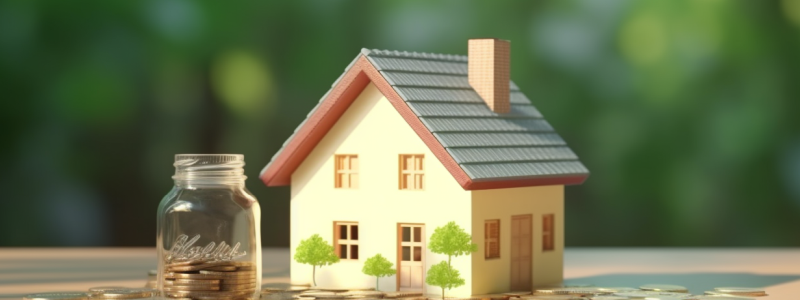
Always Ask the Professionals
As we’ve journeyed through the ins and outs of ‘average roof life,’ it’s clear that the roof over your head is more than just a structural feature—it’s a long-term investment in the safety and security of your Denver property. From understanding the factors that affect roof lifespan to recognizing when it’s time for a replacement, we’ve covered the essential knowledge you need to make informed decisions about your roofing needs.
Here are the key takeaways:
- Knowledge is Power: Knowing the average lifespan of your roofing material and the factors that affect it can help you plan and budget for future maintenance and replacements.
- Maintenance Matters: Regular inspections and upkeep are crucial in extending the life of your roof and preventing minor issues from becoming major expenses.
- Quality Counts: Investing in high-quality materials and professional installation pays off in the long run, potentially saving you money and hassle.
- Professional Partnerships: Choosing the right roofing service is about more than just finding someone to do the job—it’s about finding a partner who will ensure the longevity and durability of your roof.
As you consider the future of your roof, remember that proactive steps taken today can prevent costly repairs tomorrow. Whether you’re scheduling routine maintenance or facing the prospect of a full replacement, approach each decision with the confidence that comes from being well-informed. Take action today by scheduling a professional inspection or consultation with B&M Roofing of Colorado to assess the health of your roof.
Metal Roof vs. Shingles
In the picturesque landscape of Denver, Colorado, where homes and businesses are often exposed to diverse weather conditions, the choice of roofing material becomes paramount. From scorching summer suns to unexpected hail storms, a roof must be resilient, durable, and efficient. Among the numerous roofing options available, two have consistently dominated discussions and considerations: metal roofs and asphalt shingles.
Metal roofs, with their sleek appearance and undeniable durability, have been a favorite for those looking for longevity and a modern touch to their property. On the other hand, asphalt shingles, with their classic appeal and cost-effectiveness, have been a staple in American homes for decades.
But how does one decide between the two? Is it merely a matter of aesthetics, or are there deeper factors at play? As we delve into the “Metal roof vs. shingles” debate, we aim to shed light on the pros and cons of each, offering homeowners and business owners in Denver a comprehensive guide to making an informed decision.
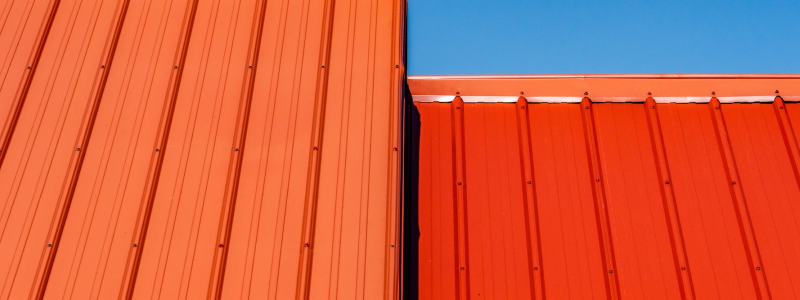
Pros of Metal Roofs: Are Metal Roofs Worth?
When considering the roofing options for your home or business it’s essential to weigh the advantages of each material. Metal roofs, in particular, have gained popularity for several compelling reasons:
- Durability: One of the most significant benefits of metal roofs is their exceptional durability. Unlike other materials, metal can withstand extreme weather conditions, from heavy snowfall to hail storms. This resilience ensures that your roof remains intact and functional for years to come. Metal roofs can offer a 10-25% reduction in cooling costs due to their ability to reflect the sun’s UV and infrared light rays.
- Energy Efficiency: Metal roofs are known for their energy-saving properties. Their reflective surfaces can deflect sunlight, reducing the amount of heat absorbed by your home. This means that during the hot summer months, your home remains cooler, leading to significant savings on air conditioning costs.
- Variety of Styles: Gone are the days when metal roofs were limited to a few designs. Today, they are available in a plethora of styles, colors, and finishes, allowing homeowners to choose a design that complements their property’s aesthetic.
- Eco-Friendly: Metal roofs are sustainable and environmentally friendly. Most metal roofing materials are made from recycled content, and once they reach the end of their lifespan, they can be recycled again, reducing landfill waste.
- Fire Resistance: Metal roofs are non-combustible, making them highly resistant to fire. This feature is especially beneficial in areas prone to wildfires, providing an added layer of protection to your property.
- Low Maintenance: Unlike other roofing materials that may require regular upkeep, metal roofs demand minimal maintenance. Occasional cleaning and inspection are generally all that’s needed to keep them in optimal condition.
Cons of Metal Roofs: Is A Metal Roof Cheaper Than Shingles?
When considering “Metal roof vs. shingles”, it’s essential to understand the potential drawbacks of metal roofing. While metal roofs offer numerous benefits, they also come with their own set of challenges:
- Initial Cost: Metal roofs tend to have a higher upfront cost compared to asphalt shingles. This can be a significant factor for homeowners and business owners working within tight budgets. However, it’s crucial to weigh this initial investment against the long-term savings and durability that metal roofs provide. Some sources highlight the affordability aspect, noting that metal roofs can be two or three times more expensive than other roofing materials.
- Noise: One common concern with metal roofs is the noise during heavy rain or hailstorms. The sound of raindrops or hail hitting the metal surface can be louder than on traditional shingle roofs. Proper insulation can mitigate this issue, but it’s a factor to consider, especially in areas prone to frequent rain.
- Potential for Denting: While metal roofs are durable, they can be susceptible to denting, especially in areas with frequent hailstorms. It’s essential to choose a high-quality metal roofing material to reduce the risk of denting.
- Expansion and Contraction: Metal roofs can expand and contract with temperature changes. Over time, this can lead to loosening of fasteners or other components, requiring additional maintenance.
- Specialized Installation: Installing a metal roof requires specialized skills and tools. It’s crucial to hire experienced professionals to ensure the roof is installed correctly, which can add to the overall cost.
- Aesthetic Concerns: Some homeowners prefer the traditional look of shingles over the more modern appearance of metal. While metal roofing comes in various styles and colors, it might not suit every architectural style.

Pros of Shingles
In the debate of “Metal roof vs. shingles”, asphalt shingles stand out for several reasons that appeal to homeowners and business owners alike. Here are the primary advantages of shingle roofs:
- Affordability: One of the most significant benefits of shingle roofs is their cost-effectiveness. Compared to metal roofs, asphalt shingles are generally more affordable, making them a popular choice for those on a budget.
- Ease of Installation: Shingle roofs are relatively straightforward to install. Their flexibility and lightweight nature mean that they can be fitted quickly, reducing labor costs and installation time.
- Variety of Colors and Styles: Asphalt shingles come in a wide range of colors and styles, allowing homeowners to choose a design that complements the aesthetic of their property. Whether you’re looking for a traditional or contemporary look, there’s likely a shingle style to match.
- Repairability: If a section of your shingle roof gets damaged, it’s often easier and less costly to repair or replace individual shingles than to fix a metal roof.
- Sound Insulation: Unlike metal roofs, shingle roofs tend to offer better sound insulation, ensuring that noise from rain or hail is less intrusive.
- Familiarity: Given their popularity, many roofing contractors are familiar with shingle installation and repair, ensuring that homeowners have a wide range of experts to choose from.
Cons of Shingles
When considering “Metal roof vs. shingles”, it’s essential to understand the potential drawbacks of shingle roofs. Here are some of the primary disadvantages:
- Shorter Lifespan: While shingle roofs are affordable, they typically have a shorter lifespan than metal roofs. On average, asphalt shingles last between 15 to 30 years, depending on the quality and maintenance. Some sources even claim that they can last for over 50 years.
- Maintenance Requirements: Shingle roofs require more frequent maintenance to ensure their longevity. This includes regular inspections for damage, cleaning to remove debris and algae, and replacing damaged shingles.
- Vulnerability to Extreme Weather: Shingles can be damaged by high winds, hail, and other extreme weather conditions. They are also more susceptible to algae and moss growth, which can affect their appearance and functionality.
- Environmental Concerns: Unlike metal roofs, which are often made from recycled materials and are recyclable at the end of their life, asphalt shingles contribute to landfill waste.
- Potential for Increased Insurance Premiums: Some insurance companies may increase premiums for homes with shingle roofs, especially in areas prone to severe weather conditions.
- Heat Absorption: Shingles, especially darker ones, can absorb heat, which can increase cooling costs during the summer months.
Lifespan and Durability
When comparing “Metal roof vs. shingles” in terms of lifespan and durability, it’s crucial to understand the longevity of each roofing material.
How Long Do Metal Roofs Last:
Metal roofs are renowned for their impressive durability and extended lifespan. Depending on the material and maintenance, metal roofs can last between 40 to 70 years. Their resilience is attributed to their ability to withstand extreme weather conditions, from high winds to hailstorms. Furthermore, metal roofs are fire-resistant, moisture-proof, and inaccessible to most pests, ensuring their longevity.
How Long Do Shingles Last:
While asphalt shingles are widely popular due to their affordability and ease of installation, their lifespan is typically shorter than metal roofs. On average, asphalt shingles can last between 12 to 20 years, depending on the quality, maintenance, and environmental factors. Factors such as extreme weather conditions, mold, mildew, and rot can affect the longevity of shingle roofs.

Final Recommendations
In the debate of “Metal roof vs. shingles”, both roofing materials present their unique advantages and challenges. Metal roofs are environmentally friendly, durable, and offer significant energy savings. On the other hand, shingles are widely recognized for their affordability, ease of installation, and versatility in design.
However, when considering the long-term benefits, metal roofs often come out ahead due to their extended lifespan, reduced maintenance needs, and energy efficiency. For homeowners and business owners in Denver, Colorado, it’s essential to weigh the initial costs against the long-term savings and benefits.
In conclusion, while shingles might be a suitable choice for those on a tight budget or with specific aesthetic preferences, metal roofs offer undeniable advantages in durability, lifespan, and eco-friendliness. If you’re contemplating a roofing project in Colorado, we recommend consulting with B&M Roofing. Our team of experts will provide guidance tailored to your specific needs, ensuring you make an informed decision for your residential or commercial property.
Winter Roof Maintenance Tips
Before winter arrives in full force, it is crucial to prioritize the maintenance and care of your roof. The cold weather, snow, and ice can pose significant challenges and potentially lead to serious roof damage if not properly addressed.
In the following paragraphs, we will provide essential tips for winter roof maintenance to help you prevent common roof problems, identify signs of leaks and damage, minimize ice dams, choose durable roofing materials, conduct thorough roof inspections, and maintain your gutters and downspouts. By implementing those tips, you can ensure the longevity and integrity of your roof throughout the winter season.
One of the key aspects of effective winter roof maintenance is conducting a thorough inspection before the cold weather sets in. This allows you to identify any existing issues and address them promptly. However, it is important to note that inspecting and maintaining your roof during winter can be challenging and dangerous, especially if you’re not experienced or equipped with the necessary tools and safety gear.
Contact the B&M Roofing professional team for your roof inspection. We have the expertise and equipment to perform simple and complex roof maintenance and replacement procedures.

Common Roof Problems in Winter
Winter weather can worsen existing roof problems and create new challenges. It is essential to be aware of common roof issues during this season to address them promptly. Some common problems include:
- Ice Dams: Ice dams form when snow on the roof melts, then refreezes at the roof’s edges, creating a barrier that prevents proper drainage. This can lead to water seeping under the shingles and causing leaks and damage.
- Roof Leaks: Cold temperatures, snow, and ice can cause roofing materials to contract, creating gaps and potential points of entry for water. Leaks can occur when ice or snow melts and finds its way into these vulnerable areas.
- Snow Load: Snow accumulation can put excessive weight on the roof, leading to stress and potential structural damage if the roof is not properly designed or maintained.
- Condensation: Temperature differences between the warm interior of your home and the cold exterior can create condensation in the attic. The moisture can lead to mold growth, compromising not only the integrity of the roof but also making the house interior an unpleasant space to live in.
Signs of Roof Leaks and Damage in Winter
Identifying signs of leaks and damage before winter is crucial to address issues promptly and prevent further deterioration. Look out for the following signs:
- Water Stains: Check the interior walls and ceilings for water stains or discoloration, as they often indicate a roof leak.
- Dripping or Water Pools: If you notice dripping water or pools of water in your attic or ceiling, it clearly indicates a roof leak.
- Icicles and Ice Buildup: While icicles may seem harmless, they can be a sign of poor insulation and the potential for ice dams to form.
- Damaged or Missing Shingles: Inspect your roof for any damaged or missing shingles. Strong winds and ice buildup can cause shingles to become loose or get dislodged.
- Sagging or Uneven Roof Surface: A sagging or uneven roof surface can indicate structural issues caused by snow load or other underlying problems.
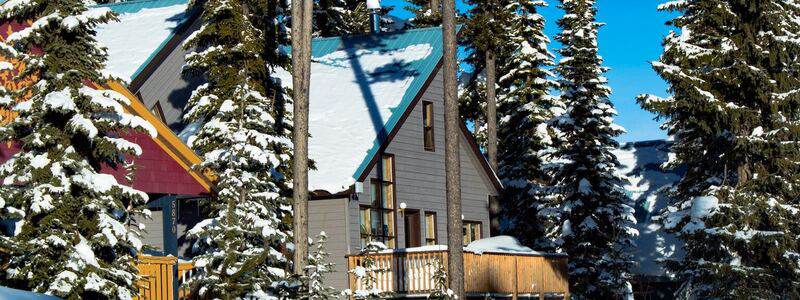
Tips for Preventing and Minimizing Ice Dams on the Roof
Ice dams are a common winter problem that can lead to significant roof damage if not addressed promptly. The following tips can help you prevent and minimize ice dams.
Insulate Your Attic
Proper attic insulation helps maintain a consistent temperature and prevents heat from escaping, reducing the risk of ice dams. Ensure that your attic has sufficient insulation and seal any air leaks.
Ventilate Your Attic Regularly
Proper attic ventilation helps regulate temperature and reduces moisture buildup. It allows for the escape of warm air, preventing it from melting snow on the roof and contributing to ice dam formation.
Remove Snow
Safely remove snow from your roof using a roof rake or hire professionals to do the job. Clearing snow helps prevent its accumulation and minimizes the likelihood of ice dams forming.
Install Ice and Water Shield
Consider installing ice and water shield membranes along the eaves and valleys of your roof. This provides an additional layer of protection against water infiltration caused by ice dams.
How to Choose the Right Roofing Materials for Winter Durability
Choosing the right roofing materials is essential for ensuring durability and performance during the winter season. Consider the following factors when selecting roofing materials:
- Material Durability: Opt for materials known for their durability and resistance to extreme weather conditions. Asphalt shingles, metal roofs, and slate tiles are popular choices due to their ability to withstand harsh winters.
- Slope and Pitch: Consider the slope and pitch of your roof. Steeper roofs allow snow to slide off more easily, reducing the risk of excessive snow accumulation and potential damage.
- Insulation Properties: Some roofing materials offer better insulation properties than others. Insulated metal panels, for example, provide excellent thermal resistance, helping to maintain a consistent temperature inside your home.
- Get Professional Advice: Seek advice from roofing professionals who can assess your needs and recommend the most suitable roofing materials for your climate and budget.
Schedule an inspection by the B&M Roofing team to discuss ways to improve your roof and ensure its longevity and safety.
Roof Inspection and Maintenance Before Winter
Roofs take a beating from the weather, and that weather can be harsh in some states, like Colorado. Roofs are one of the most important parts of a home or building because they protect the structure from natural elements such as wind, rain, ice, snow, extreme heat, and hail, but they can be damaged by those elements over time. Before winter arrives, conducting a comprehensive roof inspection and performing necessary maintenance tasks is crucial.
Hire a Professional Roofing Contractor
Consider hiring a professional roofing contractor, such as B&M Roofing, to inspect your roof thoroughly. They have the training to do it safely and the expertise to identify potential issues and provide appropriate recommendations.
Check Flashing and Sealants
Inspect the flashing around chimneys, vents, and skylights for any signs of damage or deterioration. Ensure that all sealants are intact and in good condition.
Clean Gutters and Downspouts
Clear your gutters and downspouts of leaves, debris, and any blockages. Debris uncleared from your roof can clog gutters and cause damage to your property. When gutters are clogged, rain and melted snow cannot drain properly, leading to a buildup of standing water. This can cause interior leaks and shorten the lifespan of your roof. In addition, the extra weight of the debris and water can bend your gutters or tear them away from the roof.
Trim Overhanging Branches
Trim any overhanging tree branches near your roof to minimize the risk of damage from falling limbs and reduce the accumulation of leaves and debris.
Preventing Roof Collapses Due to Heavy Snow
In regions with heavy snowfall, the weight of accumulated snow can pose a risk of roof collapse. Take these precautions to prevent roof collapses:
- Ensure Proper Roof Design and Construction: When constructing or renovating your home, ensure that the roof is designed to handle the expected snow load in your area. Consult with professionals to determine the appropriate roof pitch and structural requirements.
- Remove Snow from the Roof: Safely remove accumulated snow from your roof using a roof rake or hire professionals to do the job. Regular snow removal helps alleviate the excess weight on your roof.
- Strengthen Structural Support: Consider reinforcing your roof’s structural support if you live in an area prone to heavy snowfall. Consult with a structural engineer or a professional roofing contractor, such as B&M Roofing, to assess and reinforce your roof if necessary.
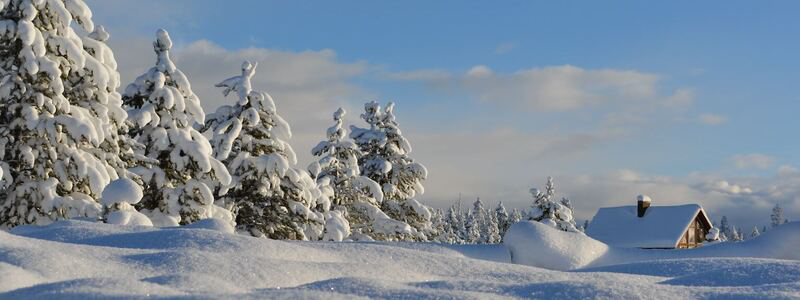
Gutter and Downspout Maintenance
Proper gutters and downspouts maintenance is essential for effective water drainage and preventing ice dams. Follow these tips:
- Clean your gutters at least twice a year, before and after winter, to remove leaves, debris, and any blockages. Clogged gutters can lead to water backup and potential damage to your roof.
- Regularly inspect your gutters and downspouts for signs of damage, such as cracks or sagging. Address any issues promptly to ensure proper water flow.
- If you haven’t done this yet, consider installing gutter guards to prevent debris from accumulating in your gutters and minimize the need for frequent cleaning.
- Check your downspouts to ensure they are properly connected and direct water away from your house’s foundation. Consider adding extensions if necessary to ensure proper water drainage.
Winter Roof Maintenance Tips | B&M Roofing Colorado
Proper winter roof maintenance is crucial for protecting your home and ensuring the longevity of your roof. You can safeguard your roof during the cold season by preventing ice dams, choosing the right roofing materials, conducting thorough inspections, and maintaining your gutters and downspouts.
When it comes to roof inspection and maintenance, you can rely on the expertise of the B&M Roofing team for professional guidance and quality services.
With proper preparation and maintenance, your roof will withstand extreme weather, providing peace of mind and a comfortable living environment.
Roof Replacement by Professionals | B&M Roofing
B&M Roofing has extensive experience in residential and commercial roofing, with a Colorado company providing quality service throughout the Centennial State since 1947.
The premier Colorado commercial roofing contractor uses only the highest quality roofing shingle suppliers: GAF and Owens Corning. We offer a wide range of colors and styles to choose from, ensuring that we can match the right roof shingle color to any home’s style.
We work with brands like GAF and Owens Corning to offer you a variety of roofing materials and colors to choose from and allow you to find the perfect color for your home. B&M is always available to help give your home’s roof the beauty it deserves.
How To Tell If You Need A New Roof
A new roof is about more than just fixing the existing roofing system on your house. If you’ve never had a roofing system installed before, or if it’s been a while since your last roof was constructed, it can be difficult to know whether, or when, you need a new one.
In this article, we’ll explore how to tell if you need a new roof, some frequently asked questions, and how to get started on replacing yours.
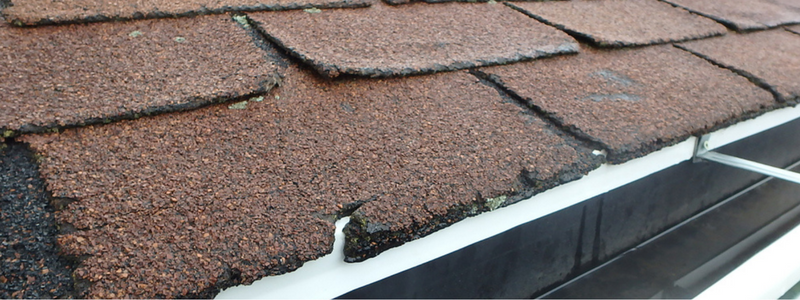
How To Tell If You Need A New Roof: Lifespan
There are a number of factors that affect your roof’s lifespan, including the materials used, quality of materials, maintenance, location, and climate.
The material used in a roof can be an indicator of how long it will last. Over time, certain types of roofs become brittle and susceptible to damage from wind or rain; therefore they may need to be replaced sooner than other types.
How long does roofing usually last?
The life expectancy of your roofing material depends on several factors, including the quality of installation, climate, and quality of materials. In general, shingles last anywhere from 20 to 50 years. Metal roofs can have a lifespan as long as 80 years. The lifespan for asphalt roofs is usually between 15 and 30 years, depending on the type and quality of the product used.
The average lifespan for a single layer of felt roofing is about 20 years. For multiple layers, it’s between 30 and 40 years in most climates (except those with extreme temperatures). If you live in an area where there are frequent snowstorms or high winds then your felt may not last that long before needing replacement because these types of weather conditions cause extra wear and tear on it over time which will eventually shorten its lifespan considerably.
For example, slate roofs have been known to last anywhere from 100 years to 250 years depending on where they’re installed. On the other hand, steel roofs have had lifespans ranging from 20-50 years depending on their quality and maintenance practices (which means regular inspections). Asphalt shingles are generally considered to be one of the least costly options but also one of the least durable – lasting only 8-12 years before they need replacement because they tend not to withstand harsh weather conditions as well as other materials like clay or concrete tile.
Is your roof older than 20 years?
One of the most quickly identifiable ways to know if you need a new roof starts when you examine the age of the existing roofing system. When your roof is older than 20 years, it is time to consider a new roof.
As a general benchmark, roofs generally last between 20 and 25 years. If your house was built before 1997 or so and you haven’t replaced the roof yet, it’s probably time to consider having a new roofing system installed.
Unsure if you need a replacement? These two things can help you determine if it is the right time:
- Shingles that are curling up at the edges (especially if there are visible signs of cracking)
- Small holes in shingles
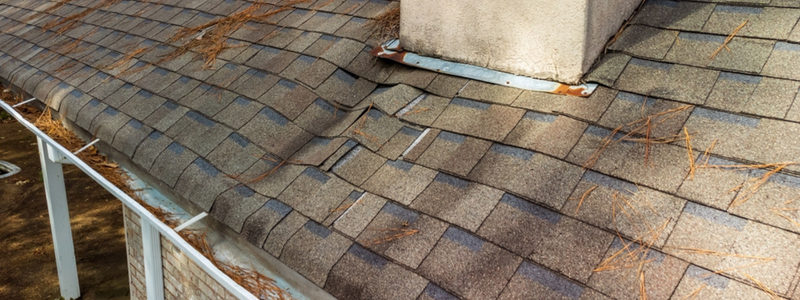
How To Tell If You Need A New Roof: Weather Damage
Water damage can be caused by several different factors. In Colorado, a storm can blow through town, causing rainwater to find its way into the attic or crawlspace under your home.
One way or another, if there’s moisture in places where it shouldn’t be (like inside of walls), then it could mean serious trouble for your roofing integrity as well as the structure of your home overall.
Are there new leaks or other signs of water damage in the house?
You can also tell if you need a new roof if you see new leaks or other signs of water damage in your house.
Heavy and recent storms can lead to needing a new roof. If you live in an area that is prone to severe weather, such as Colorado, you should inspect your roof after any storm. The best way to do this is to hire a professional roofing company that will inspect the roof for damage, but if you wish to inspect it yourself there are some things you should look for:
- Look for missing shingles or pieces of shingle that have been blown off
- Check for any splits or tears in the wood structure underneath that may be causing leaks
- Inspect vents and chimneys (if applicable)
Do you notice dark stains on your ceiling or walls from above your roofline?
Dark stains on your ceilings and walls are a sign of water damage. The stains indicate that there is an ongoing leak in the roofing system. As moisture gets into your home, it will cause mold to grow. Mold will leave dark stains on the ceiling or walls, which can lead to other problems such as allergic reactions and respiratory issues for occupants in your home.
If you notice these dark stains, it’s important to have them inspected by a professional roofer who can determine whether they’re caused by condensation or a leak in your roofing system.

How To Tell If You Need A New Roof: Craftsmanship Issues
Is the roof sagging, warped, curved, or bubbling?
If the roof is sagging, warped, curved, or bubbling, these symptoms are indicative of a damaged roof that needs to be fixed. Sagging is caused by missing nails, while warping is usually caused by age and moisture. Bubbling can occur in areas where there’s been an excessive amount of moisture for an extended period of time.
Is there visible deterioration in the nails holding down your shingles to the roof structure?
It may be difficult to tell if your nails are loose or missing without careful inspection. If you do notice that some are broken, the shingle will likely be falling off in pieces or become totally gone.
In this case, you have a need for a new roof!
Rusty shingles and nails can also indicate that it’s high time to call in a professional roofer. While rusty nails aren’t necessarily an indication of damage yet (they could just mean that they’re old), they should still be inspected by a professional because of how much water comes into contact with them as part of your home’s plumbing system.
Are any of the shingles cracked, curled up, or broken?
If you find that any of the shingles are cracked, curled up, or broken, this is a sign that something is wrong with your roof. If you don’t replace these damaged shingles ASAP, they will start leaking and cause additional damage to your home.
FAQ: How To Tell If You Need A New Roof
How do you know when it’s time to change your roof?
Recognizing the signs of an aging or damaged roof is crucial. Look for indicators such as missing or curled shingles, frequent leaks, granules in the gutters, sagging roof valleys, and daylight coming through the roof boards. If you notice any of these signs, it might be time to consider a roof replacement.
What is the life expectancy of a roof?
The life expectancy of a roof largely depends on the material used. Asphalt shingle roofs typically last 20 to 25 years, while wooden shingles can last 30 to 40 years. Metal roofs have a lifespan of 40 to 70 years, and slate, copper, and tile roofs can last over 50 years. However, factors like climate, maintenance, and installation quality can influence a roof’s longevity.
How often should I replace the roof of my house?
The frequency of roof replacement depends on the roofing material, environmental conditions, and how well the roof has been maintained. On average, homeowners might need to replace their asphalt shingle roofs every 20 to 25 years. However, with regular inspections and timely repairs, some roofs can last longer. It’s always a good idea to consult with a roofing professional if you’re unsure about the condition of your roof.
How do you know if your roof is in bad shape?
Several signs can indicate a roof in poor condition. These include:
- Missing, broken, or curled shingles
- A large amount of shingle granules in the gutters
- Leaks or water stains on the ceiling or walls
- Sagging areas on the roof
- Moss or algae growth
- Rusted or damaged flashing
- Daylight visible through the roof boards
If you observe any of these signs, it’s advisable to get a professional roof inspection to determine the extent of the damage and the best course of action.
Get A Professional Opinion To Tell If You Need A New Roof
As dedicated roof experts, B&M Roofing offers expert services and care for commercial and residential projects across Colorado and nearby states. Whether you are looking for a new roof for your home or your office, or if you’re needing roof repair, we come equipped with extensive knowledge and comprehensive industry experience.
Our specialties include sheet metal roofs, commercial roofs, and residential maintenance and support. A team of highly trained and professional experts can provide a FREE estimate for any project.
Contact us today to learn more at (303) 443-5843.
Take a look at some of our past work so that you know how much quality workmanship goes into every job we complete.
Longest Lasting Roof Type
When it comes to investing in your property, few decisions are as significant as choosing the right roofing material. Not only does your roof safeguard your home or business from the elements, but it also plays a pivotal role in your property’s overall aesthetics and value. Among the many options available, one question looms large: What is the longest lasting roof type?
Every property is unique, and its roofing requirements reflect that. The team of B&M Roofing takes the time to assess your property’s specific needs, considering factors such as climate, architectural style, budget constraints, and long-term goals. Our experts offer tailored recommendations that align with your individual preferences and requirements.
In this article, we’ll explore what is the longest lasting and most durable roof type and material that can stand the test of time.
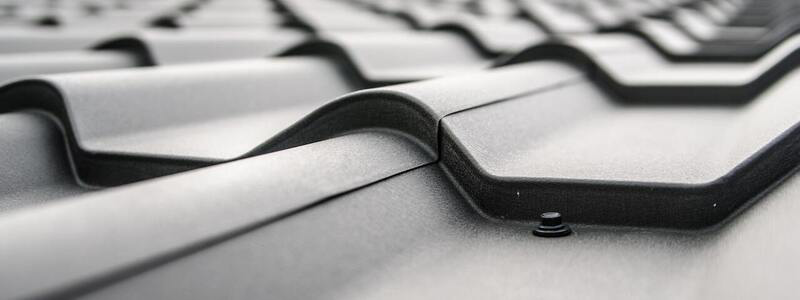
The Quest for the Longest Lasting Roof Type
Roofing materials vary widely in terms of lifespan, durability, and resilience. The longest-lasting roof type is one that strikes a harmonious balance between all these factors, providing you with decades of protection without constant maintenance or repairs. While there are several contenders, one material consistently stands out as the front-runner in terms of longevity and strength: slate roofing.
Slate Roofing: A Timeless Triumph
When it comes to a roof that’s not only built to last but also exudes an air of timeless elegance, slate roofing takes the crown. Crafted from natural stone, slate shingles offer a remarkable lifespan that can extend well beyond a century. This makes them a compelling choice for home and business owners seeking a roofing solution that doesn’t just provide shelter but tells a story of enduring quality.
What Makes Slate Roofs Last So Long?
The secret to the remarkable longevity of slate roofs lies in the material’s exceptional properties. Slate is a metamorphic rock formed from layers of sedimentary rock subjected to immense pressure and heat over time. This unique formation process results in incredibly dense slate, resistant to water absorption and impervious to temperature fluctuations. As a result, slate shingles maintain their structural integrity and appearance for decades, if not centuries.
The Perks of Opting for Slate
- Unmatched durability: Slate’s durability is practically unparalleled. It can withstand harsh weather conditions, including heavy rain, hail, snow, and high winds, without showing signs of wear or deterioration. A roof made of good slate installed properly on a strong support structure is common to last a couple of centuries or even more.
- Low maintenance: Unlike many other roofing materials that require frequent repairs or replacement, slate roofs demand minimal maintenance. The general idea is set it and forget it. Their resistance to water and other elements means you won’t have to worry about rot, mold, or other common roofing issues.
- Aesthetic appeal: Slate roofing adds an undeniable aesthetic charm to any structure beyond its practical benefits. Its natural, earthy tones and unique texture can enhance the architectural beauty of your home or business.
- Eco-friendly choice: Slate is a natural material that doesn’t require chemical treatments or manufacturing processes. Choosing slate is a sustainable choice that contributes to reducing your environmental footprint.
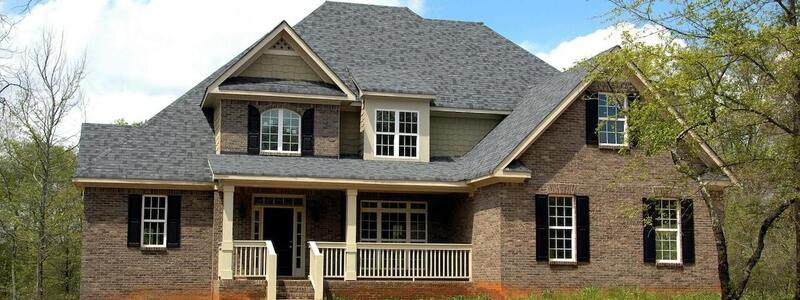
The Strength of the Alternatives
Selecting the suitable roofing material involves more than just aesthetic considerations. The decision can impact your property’s integrity, longevity, and value. When longevity is paramount, slate roofing emerges as the undisputed champion. Its innate durability, resistance to the elements, and timeless beauty make it an investment that pays dividends for generations. However, the alternatives, such as metal, concrete, and clay tile roofing, also offer impressive lifespans and unique benefits.
Metal Roofing: Enduring Excellence
Metal roofing has earned its reputation for durability by being an exceptional choice for homeowners and business owners seeking a long-lasting roofing solution. Though it feels like a modern solution, it has been around for centuries. The grayish rooftops of Paris get their color from zinc sheets first installed in the 1800s. The green color on many famous church domes is testimony to the theoretical conclusion that copper roofs can last 1000 years! And what other proud proof of copper sheet longevity than the Statue of Liberty itself?
This roofing category includes various metals, such as steel, copper and sometimes aluminum, each offering its unique benefits. Metal roofs typically provide a lifespan ranging from 40 to 70 years, contingent on factors like the specific material used and the level of maintenance upheld.
Why Metal Roofs Shine?
- Weather resilience: Metal roofs are engineered to withstand various weather conditions. They effortlessly shed snow, resist rainwater penetration, and endure high winds. This resilience makes them an excellent option for regions with extreme weather patterns.
- Durability: Metals like steel copper and aluminum possess inherent strength, ensuring that metal roofs hold up against impacts from hail, falling debris, and other potential hazards.
- Minimal maintenance: One of the key advantages of metal roofing is its low maintenance requirement. Metal roofs remain largely unaffected by these common issues, unlike materials that may succumb to rot, pests, or decay over time.
- Energy efficiency: Metal roofs often incorporate reflective coatings and various insulating layers that help reflect sunlight and heat away from the building, contributing to better energy efficiency and potential utility savings.
Concrete Tile Roofing: The Longevity of Concrete
Concrete tile roofing is a steadfast choice when longevity is a top priority. These tiles are known to endure for approximately 50 to 100 years, making them an investment that offers lasting protection. Concrete tiles are fashioned from a mixture of sand, water, and cement, which is then molded into shapes and cured to create robust roofing material.
Why Concrete Tiles Endure?
- Fire and pest resistance: Concrete tiles are non-combustible, rendering them highly fire-resistant. Additionally, their composition deters pests and rodents, enhancing the overall longevity of the roof.
- Color retention: These tiles are often pigmented with durable color coatings, which means they retain their appearance over the years, even in the face of constant exposure to the elements.
- Climate adaptability: Concrete tiles are engineered to withstand diverse climates. They can handle freeze-thaw cycles without cracking, crucial for regions prone to temperature fluctuations.
Clay Tile Roofing: The Classic Choice
Clay tile roofing carries an air of timelessness, dating back 5,000 years to glazed earthenware rooftops in China, and elegance that few other materials can match. Beyond its aesthetic allure, clay tile roofing boasts an impressive lifespan of 75 to 100 years or even more, making it a choice that resonates with history and longevity. In the quest for the longest lasting roof type, clay tile roofing is a strong candidate.
The Strengths of Clay Tiles
- Distinct aesthetic: The warm, earthy tones of clay tiles contribute to a unique Mediterranean or Spanish architectural style that enhances the visual appeal of any property.
- Weather endurance: Clay tiles are naturally resistant to extreme weather conditions, including UV radiation, high winds, and heavy rainfall.
- Fire resistance: Similar to concrete tiles, clay tiles are fire-resistant, which can provide peace of mind for homeowners concerned about fire hazards.
- Eco-friendly: Using natural clay and the absence of synthetic materials make clay tile roofing an environmentally friendly choice.
Asphalt Shingles: A Balance of Affordability and Durability
Asphalt shingles are a popular choice for their balance between affordability and durability. While they might not match the longevity of slate or concrete tiles, high-quality asphalt shingles can still offer a respectable lifespan of around 20 to 30 years.
The Benefits of Asphalt Shingles
- Cost-effectiveness: Asphalt shingles are often more budget-friendly than other roofing materials, making them an accessible choice for homeowners seeking durability without breaking the bank.
- Variety: These shingles come in a wide range of colors, styles, and textures, allowing you to find a look that complements your property’s aesthetics.
- Ease of installation and repairs: Asphalt shingles are relatively lightweight and easy to install or replace, saving labor costs during installation and any necessary repairs.
- Weather resistance: High-quality asphalt shingles are designed to withstand various weather conditions, including moderate wind and rain.

Longest Lasting Roof Type – B&M Roofing
Different roofing materials come with distinct advantages and potential drawbacks. B&M Roofing’s professionals are well-versed in the strengths and weaknesses of each material, enabling them to guide you toward the most suitable option based on your desired lifespan, aesthetic preferences, and maintenance expectations.
As you weigh your options, remember that a roof is more than just a protective covering; it’s a statement of durability, elegance, and longevity. Whether you’re looking to add character to your home or safeguard your business, the longest-lasting roof type will stand as a testament to your wise choice for years to come.
What Are Roofing Shingles Made Of
When it comes to protecting your home or business from the elements, few things play a more crucial role than the roof over your head. Roofing shingles, those overlapping, layered pieces that cover the surface of your roof, play a significant role in safeguarding your property and adding to its visual appeal. If you’ve ever asked yourself what materials roofing shingles are made of, you’re in the right spot.
In pursuing the ideal roofing solution, professional guidance can make all the difference. With an overwhelming array of roofing options and materials available, making an informed decision requires a comprehensive understanding of the unique characteristics of each material and its compatibility with your property.
Let’s look in-depth at roofing shingles, their composition, different types, and everything that falls within these categories.
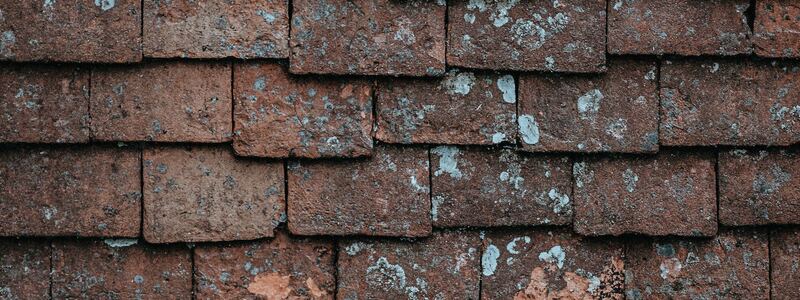
What Are Roofing Shingles Made Of Today?
Roofing shingles have come a long way from their humble beginnings. Today, they’re made from various materials that offer durability, longevity, and aesthetic value. While various types of shingles exist, the most common materials include asphalt, fiberglass, wood, metal, ceramic, concrete, slate, synthetic materials like rubber and plastic, and even solar shingles. These materials are carefully chosen to provide the best combination of looks, strength, weather resistance, insulation, and overall performance.
The Most Common Roof Shingle Material: Asphalt Shingles
Asphalt shingles are the most prevalent choice for roofing materials across the United States. If one had to answer the question of “What are roofing shingles made of?” with one word, that word would definitely be asphalt. These shingles comprise fiberglass or organic mat coated with asphalt and mineral granules. They balance affordability and reliability, making them an attractive option for homeowners and business owners.
Organic asphalt shingles contain more asphalt than fiberglass shingles, so they are generally more durable in punishing weather. Being heavier, they are more likely to withstand hail and frost without cracking. But because of their organic nature, they absorb more water and may warp; being heavier than fiberglass adds load to your roof, and they are less fire resistant.
Fiberglass asphalt shingles are lighter on the supporting structures and may not be as durable in stormy conditions, but their fiberglass core lasts better than their organic counterparts.
Modern asphalt shingles are engineered to resist harsh weather conditions, UV radiation, and even the impact of hail. Their construction allows for flexibility while maintaining structural integrity, which is crucial for withstanding temperature changes and natural movements of your home.
Do Roof Shingles Contain Asbestos?
Due to its fire-resistant and insulating properties, asbestos was used in construction materials, including roofing shingles. However, since the health risks associated with asbestos became well-known, its use in building materials was phased out. Therefore, roofing shingles manufactured today do not contain asbestos. Modern shingles are made with safety as a top priority, using materials that provide protection and peace of mind.
Avoid repairing your roof by yourself; opt for an expert roofing contractor to do the job.
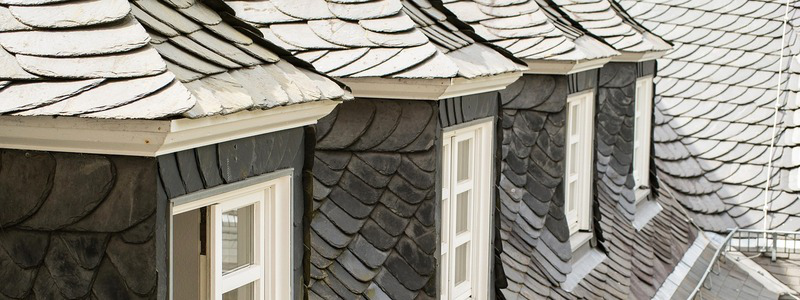
What Are Roofing Shingles Made Of Besides Asphalt?
There is a diverse range of materials for roofing shingles. From the cost-effective qualities of asphalt to the enduring elegance of slate and the resilience of metal, each material offers its own set of advantages. Let’s see the different types of roof shingles:
Asphalt Shingles:
Asphalt shingle roofs are the most affordable for materials and installation. They are the most common choice of roof replacement material or new home roof installations. There are two main types of asphalt shingles, organic asphalt and fiberglass. They both come in three-tab or architectural styles.
3-tab asphalt shingles are a decent choice when on a tight budget, but they are thinner and wear out more quickly. Architectural shingles have an extra laminate layer that gives them contours and textures and can mimic other materials, providing an affordable and elegant alternative to the traditional flat 3-tab shingle.
Wood Shingles and Wood Shakes:
Wood shingles add a touch of natural beauty to your roof. Typically made from cedar or redwood, they offer excellent insulation and a charming, traditional look. However, they require more maintenance than some other shingle types. A more rustic option is wood shakes, where the wood tiles are hand split to give a rougher classy look. Wood shakes, typically cedar being split by hand, are the thickest wood roofing material on today’s market, providing better protection against heavy rain, hail and strong winds.
Metal Shingles:
Metal shingles, often made from materials like aluminum, copper, or steel, are known for their longevity and durability. They can last several decades and provide exceptional protection against the elements. An old-time classic with many modern variations, metal roofing, can be seen on centuries-old European buildings, many old church domes and several very modern structures. Relatively easy to install and lightweight, metal shingles are a good choice, especially when the roof support system is not very strong.
At B&M Roofing, we can help you explore options that offer durability and aesthetics while remaining within your financial comfort zone.
Clay tiles:
Clay tiles are made of all-natural materials and will maintain their rich earth tones and classic appearance for 100 years. They are fire-resistant and will not burn. They do not need much maintenance, and while they are usually seen in warmer climates, they work well in most environments.
However, they can be heavy, and the supporting structure may need reinforcement before opting for the relatively permanent solution of clay tiles.
Concrete Shingles:
These shingles are known for their robust nature, offering excellent resistance against harsh weather conditions, including heavy rains and strong winds. Their weight provides stability and longevity, making them a reliable option for long-term roofing solutions.
Synthetic Shingles:
As technology advances, so do our roofing options. Synthetic shingles, made from rubber, plastic, or polymer materials, offer a range of benefits, such as affordability, lightweight construction, and ease of installation.
Rubber shingles can look very similar to asphalt shingles. Their characteristics, cost and lifespan depend on the type of rubber, from the most affordable TPO and PVC to the most expensive EPDM roof.
Composite plastic shingles are another very affordable synthetic alternative. They can be shaped and colored to imitate pretty much anything and they are very light, which makes them easy to install and very forgiving for any weaknesses of the support structure. But they are not as long-lasting as most other shingle materials and may need the most frequent replacement and repairs.
Browse through our gallery of residential roofing projects to see our work!
Slate Shingles:
If you aim for a timeless and sophisticated appearance, slate shingles might be your choice. Made from natural stone, they can last over a century or two and lend a distinctive elegance to any structure. One of the most expensive options and heavy on the support structure too, but it is still an excellent roof option if you can afford it. Many love the natural beauty of it, while others find it dull as it does not come in any varying colors or shapes.
Solar Shingles:
Though not strictly shingles, as they lie flat next to each other, solar panels can replace shingles on the south side of your roof, so we can discuss them as an option here. Their high-tech appearance can give a very pleasing contrasting combination and though one of the most expensive options, they are typically installed on the south side only or just part of it and they can significantly reduce energy bills.

Types of Roof Shingles: Choosing the Right Material
Understanding the makeup of roofing shingles is crucial when deciding your property. From classic and reliable asphalt shingles to more intricate options like wood, metal, and synthetic materials, there is a wide variety of choices to cater to your preferences, needs, and budget. The days of asbestos-containing shingles are long gone, replaced with safer and more effective materials that ensure both the protection and the visual appeal of your home or business.
Choosing the suitable roofing material involves balancing your financial constraints and your roofing aspirations.
B&M Roofing’s commitment to quality extends beyond material recommendations. We are dedicated to employing skilled craftsmanship and utilizing high-quality materials during installation, ensuring that your chosen roofing solution is installed to last, regardless of the material you opt for.
Whether considering a roof replacement or constructing a new house, contact the B&M Roofing team for an appointment to discuss your options.
Common Roof Types
Roofing is a critical aspect of any building, whether residential or commercial. It not only safeguards your property from external elements but also plays a significant role in its overall aesthetics. However, choosing the right roof type can be daunting, given the many options available. That’s where we come in to lend a helping hand.
In this article, we will delve into the most common roof types for residential and commercial buildings and provide you with essential information to make informed decisions. Whether you’re a homeowner looking to replace your existing roof or a business owner planning to construct a new commercial building, understanding the various roof types and their suitability for different climates and architectural styles is crucial.
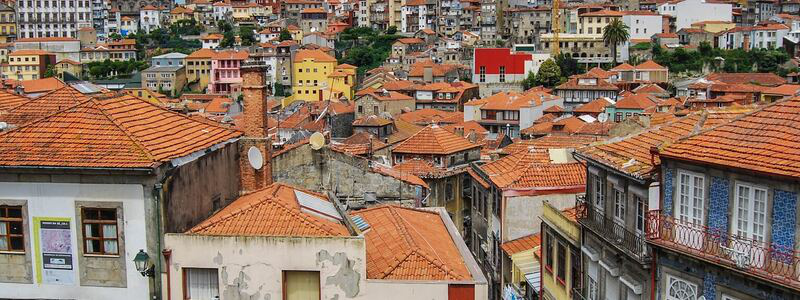
What are the Most Common Roof Types?
When it comes to roofing, there is a wide range of options available. However, some roof types are more commonly seen than others due to their practicality, durability, and aesthetic appeal. Let’s take a closer look at the most common roof types for both residential and commercial buildings.
Gable Roof
The gable roof is undoubtedly one of the most popular roof types in residential construction. It features two sloping sides that meet at a ridge, creating a triangular shape. The simplicity of its design, along with its cost-effectiveness and efficient water runoff, makes it a go-to choice for homeowners. Gable roofs are commonly found in various architectural styles and are particularly well-suited for areas with moderate climates like Colorado.
Hip Roof
The hip roof is known for its durability and stability, making it a common choice for both residential and commercial buildings. It has four sloping sides that meet at a ridge, offering excellent protection against strong winds. Hip roofs provide added strength and enhanced architectural aesthetics. In areas prone to hurricanes or high winds, such as coastal regions, hip roofs are a popular choice due to their ability to withstand extreme weather conditions.
Flat Roof
Flat roofs have gained popularity in both residential and commercial construction, especially in contemporary and minimalist designs. While they appear flat, they actually have a slight slope to allow for proper drainage. Flat roofs offer additional usable space, such as rooftop gardens or solar panel installations, and are relatively easier and more cost-effective to construct. However, proper maintenance and regular inspections are essential to prevent water pooling and potential leaks.
Shed Roof
The shed roof, also known as a skillion or mono-pitched roof, is a single-sloping roof with a steeper slope on one side and a shallower slope on the other. It is commonly used for smaller structures like sheds, garages, or extensions. Shed roofs provide a modern and minimalist aesthetic while allowing for efficient water drainage. They are also relatively easier and more affordable to construct than other roof types.
Mansard Roof
The mansard roof is a classic and elegant roof type that originated in French architecture. It features four sides with a double slope, with the lower slope steeper than the upper one. Mansard roofs provide additional living space as an attic or a full-story living area. They are commonly associated with historical buildings and Victorian-style homes, adding a touch of grandeur and architectural charm.
These are just a few examples of the most common roof types seen in residential and commercial construction. Other roof types, such as butterfly roofs, A-frame roofs, and gambrel roofs, have unique characteristics and applications.
Our team can assess your property and provide personalized recommendations to ensure the longevity and performance of your roof.

What is the Most Common Roof Type Called?
When it comes to the most common roof type, one name stands out: the gable roof. This design is widely recognized and used in residential construction, making it the go-to choice for homeowners in many regions. Its popularity can be attributed to its simplicity, versatility, and practicality.
A gable roof is characterized by its triangular shape, formed by two sloping sides that meet at a ridge. This design creates a gable or peak at each end of the roof. The steep slopes of a gable roof allow for efficient water runoff, preventing water from pooling and potentially causing leaks. This feature makes it ideal for areas with regular rainfall or snowy winters, such as Colorado.
The gable roof’s straightforward design makes it cost-effective and easier to construct and maintain compared to more complex roof types. Its simplicity allows for efficient use of materials and straightforward installation processes. This aspect makes the gable roof a practical choice for homeowners on various budgets.
Another advantage of the gable roof is its versatility in accommodating different architectural styles. Whether you have a traditional, modern, or contemporary home, the gable roof can complement the aesthetics and enhance the overall curb appeal. The clean lines and classic outline make it a timeless choice that can seamlessly blend with various architectural designs.
Additionally, the gable roof’s sloping sides provide additional space in the attic or upper levels of the house. This feature allows for better ventilation and potential future expansion. Homeowners can utilize the attic space for storage or even convert it into livable areas such as an extra bedroom or a home office.
Despite its popularity, it’s essential to consider certain factors when opting for a gable roof. The steep slopes can be susceptible to wind uplift, so proper reinforcement and quality construction are crucial, especially in areas prone to strong winds. Additionally, gable roofs may require additional measures to ensure proper ventilation and insulation.
In conclusion, the most common roof type offers a range of benefits that have made it a popular choice among homeowners. Its simplicity, versatility, and efficient water runoff suit various climates and architectural styles. The gable roof is a reliable and practical option if you’re considering a roof replacement or construction.
What are the 5 Most Common Types of Roofing?
When it comes to roofing materials, there is a wide array of options available, each with its own characteristics and benefits. However, some roofing types stand out as the most commonly used due to their durability, affordability, and versatility. Let’s explore the five most common types of roofing materials seen in both residential and commercial construction.
Asphalt Shingles
Asphalt shingles are the most popular and widely used roofing material, mainly due to their affordability and ease of installation. They are made of fiberglass or organic materials coated with asphalt and mineral granules. Asphalt shingles come in a variety of styles and colors, allowing for versatile design options. They offer excellent protection against weather elements and have a lifespan of around 15 to 30 years, depending on the quality and maintenance.
Benefits of Asphalt Shingles
- Cost-effective and widely available
- Durable and weather-resistant
- Versatile in terms of design options
- Easy to install and repair
Metal Roofing
Metal roofing has gained significant popularity due to its durability, longevity, and energy efficiency. Common metals used for roofing include steel, aluminum, zinc, and copper. Metal roofs can mimic the appearance of other roofing materials, such as shingles or tiles while offering superior durability and resistance against fire, wind, and impact. They can last 40 to 70 years or more, making them a long-term investment.
Benefits of Metal Roofing
- Exceptional durability and longevity
- Energy-efficient and environmentally friendly
- Fire-resistant and low maintenance
- Lightweight and available in various styles
Clay or Concrete Tiles
Clay and concrete tiles are renowned for their classic and elegant appearance, often seen in Mediterranean or Spanish-style architecture. These roofing materials are extremely durable and can withstand harsh weather conditions. Clay tiles are more expensive than concrete tiles but offer a longer lifespan and a unique aesthetic appeal. It’s important to note that clay and concrete tiles are heavier than other roofing materials, requiring proper structural support.
Benefits of Clay/Concrete Tiles
- Long-lasting and weather-resistant
- Excellent insulation properties
- Fire-resistant and low maintenance
- Enhance curb appeal and architectural aesthetics
Wood Shakes or Shingles
Wood shakes or shingles provide a natural and rustic look to a roof, making them popular in traditional or cottage-style homes. They are typically made from cedar, redwood, or pine. Wood roofing requires proper maintenance to prevent rot, mold, or insect infestation. However, when well-maintained, wood shakes or shingles can last 30 to 50 years.
It’s worth noting that some areas have restrictions on the use of wood roofing due to fire concerns.
Benefits of Wood Shakes or Shingles
- Natural and aesthetically pleasing appearance
- Excellent insulation properties
- Can be repaired or replaced individually
- Environmentally friendly
At B&M Roofing, we have extensive experience working with all types of roofing materials and can guide you in choosing the right one for your specific needs.
Synthetic Roofing Materials
Synthetic roofing materials, such as synthetic slate or rubber composite shingles, offer an alternative to natural materials at a more affordable price. Synthetic slate mimics the look of real slate but is lighter and easier to install. Rubber composite shingles replicate the appearance of wood shakes or slate tiles while providing enhanced durability and resistance against weather elements. These synthetic options offer a balance between cost, aesthetics, and performance.
Benefits of Synthetic Roofing Materials
- Cost-effective alternative to natural materials
- Lightweight and easy to install
- Durable and low maintenance
- Wide range of styles and colors
These five roofing materials represent the most common choices for residential and commercial buildings. Each material has its own unique features, benefits, and considerations. When selecting a roofing material, it’s important to consider factors such as budget, climate, architectural style, and desired lifespan.

Choosing an expert team at roofing
B&M Roofing has extensive experience in residential and commercial roofing, with a Colorado company providing quality service throughout the Centennial State since 1947.
The premier Colorado commercial roofing contractor uses only the highest quality roofing shingle suppliers: GAF and Owens Corning. We offer a wide range of colors and styles to choose from, ensuring that we can match the right roof shingle color to any home’s style.
We work with brands like GAF and Owens Corning to offer you a variety of roofing materials and colors to choose from and allow you to find the perfect color for your home. B&M is always available to help give your home’s roof the beauty it deserves.
Winter Roof Repair Tips
Winter is a season of beauty and tranquility, but it can also be a time of challenges for homeowners, especially when it comes to roof maintenance. As temperatures drop and snow accumulates, roofs become more vulnerable to damage, leaks, and wear. The importance of proper care and timely repair cannot be overstated, as neglecting these aspects can lead to costly damages and safety hazards.
At B&M Roofing, we understand the unique challenges that winter brings to residential and commercial roofing. That’s why we’ve compiled a comprehensive guide to Winter Roof Repair Tips to help you navigate this season with confidence. From locating leaks to fixing worn sealants, our expert advice will keep your roof in optimal condition, ensuring warmth and safety for your family or business.
In the following sections, we’ll explore eight of our best Winter Roof Repair Tips that will guide you through the essential steps of winter roof maintenance. Whether you’re a seasoned homeowner or new to the responsibilities of property care, these tips will empower you to take control of your roof’s health during the cold months.
Remember, while these tips are designed to assist you with minor repairs and inspections, some issues may require professional intervention. B&M Roofing is always here to provide expert services tailored to your specific needs. Let’s dive into these Winter Roof Repair Tips and prepare your roof for the season ahead!

Finding the Leak
Winter weather can be harsh on your roof, leading to unexpected leaks that may cause water stains on your attic ceiling or even dripping from above. Finding the leak is the first and most crucial step in our Winter Roof Repair Tips, as identifying the source of the problem allows for targeted and effective repairs.
Signs of a Leak:
- Water stains on walls or ceilings.
- Dripping sounds or visible moisture.
- A slight draft or cold spot in a specific area.
Locating the Leak Inside:
- Inspect the part of your roof that is uphill from the stains.
- Look for roof penetrations, missing shingles, or other abnormalities.
- If you have access to your attic, locate the leak based on stains and mold on the walls.
Locating the Leak Outside:
- Cautiously inspect the roof from the outside, looking for damaged or missing shingles.
- Check for cracks or breaks around chimneys, vents, and other roof appendages.
- Consider using binoculars for a closer look without risking safety on a slippery roof.
When to Call a Professional:
- If the leak is extensive or the source is unclear.
- If you are uncomfortable or unable to safely inspect the roof yourself.
- If the leak persists after attempting a DIY fix.
Winter roof repair can be challenging, and locating a leak might require patience and careful observation. However, finding the leak is essential to prevent further damage and ensure the effectiveness of subsequent repairs. If you’re unsure or need professional assistance, don’t hesitate to contact B&M Roofing. Our experienced team is equipped to handle all your winter roof repair needs, ensuring that your home stays warm and dry throughout the season.
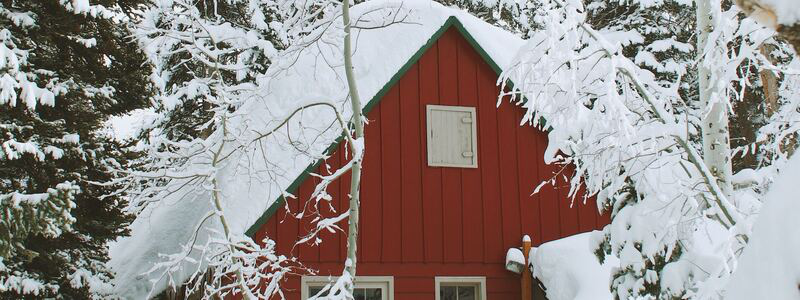
Fixing Plumbing Vent Boots
One of the common culprits behind roof leaks, especially during winter, is the plumbing vent boots. These essential components can become damaged over time, leading to unwanted moisture intrusion. In our Winter Roof Repair Tips, we’ll guide you through the process of inspecting and fixing plumbing vent boots to ensure a leak-free roof.
Understanding Plumbing Vent Boots:
- Plumbing vent boots are installed around plumbing vents, sealing the gap between the vent and the roof.
- They consist of a plastic base, metal top, and rubber boot surrounding the pipe.
- Damage to any of these parts can lead to leaks.
Inspecting the Vent Boots:
- Check the plastic bases for cracks or broken seams.
- Examine the rubber boot surrounding the pipe for tears or wear.
- Look for loose or missing nails at the base.
Repairing or Replacing Vent Boots:
- If the boot is in good shape but nails are loose, replace them with rubber-washer screws.
- If any part of the vent boot is broken or damaged, purchase a new plumbing vent boot.
- Follow the manufacturer’s instructions for installation, or consider hiring a professional if you’re unsure.
Safety Considerations:
- Always use caution when working on the roof, especially in winter when surfaces may be slippery.
Consider using a roof harness or working with a partner for added safety.
Fixing plumbing vent boots is a vital part of winter roof maintenance. While some repairs can be done on your own, don’t hesitate to reach out to B&M Roofing if the task seems too complex or if you prefer professional assistance. Our team is skilled in all aspects of roof repair, including plumbing vent boots, and we’re here to ensure your roof remains secure and leak-free all winter long.
Fixing a Leaky Chimney
Chimneys add character and warmth to a home, but they can also be a source of leaks, particularly during the harsh winter months. The flashing around brick chimneys is often susceptible to rust and damage, leading to unwanted water intrusion. In this section of our Winter Roof Repair Tips, we’ll explore how to identify and fix a leaky chimney, ensuring a cozy and dry winter season.
Identifying Chimney Leaks:
- Look for water stains or dampness around the chimney area inside the house.
- Inspect the flashing around the chimney for rust, cracks, or detachment.
- Check the mortar and bricks for signs of wear or damage.
Quick Fixes for Leaky Chimneys:
- Slip new flashing under the old rusted flashing to drive water downhill temporarily.
- Apply a waterproof sealant to small cracks or gaps as a short-term solution.
Long-Term Solutions:
- Replace the flashing altogether, ensuring proper installation and sealing.
- Consider repointing or rebuilding the chimney if the mortar or bricks are severely damaged.
- Hire a professional roofing contractor like B&M Roofing for a thorough inspection and repair.
Safety and Considerations:
- Working around chimneys can be complex and requires proper tools and safety measures.
- If you’re unsure about the repair process, it’s best to consult with a professional.
Chimneys are more than just aesthetic features; they play a vital role in venting your home. Ensuring their integrity is essential for both safety and comfort. While some minor repairs can be handled independently, a leaky chimney often requires professional attention. B&M Roofing’s experienced team is ready to assist with all your chimney repair needs, providing expert solutions that last beyond the winter season.

Fixing Step Flashing
Step flashing is a critical component in roof construction, especially where walls intersect with the roof. It helps in draining water downhill over the shingles, preventing leaks. However, when damaged, water can run underneath it and into your house, leading to significant problems. In our Winter Roof Repair Tips, we’ll guide you through the process of identifying and fixing step flashing to ensure a watertight roof.
Understanding Step Flashing:
- Step flashing consists of metal pieces bent at a 90-degree angle, placed between each course of shingles and the adjoining wall.
- It acts as a barrier, directing water away from the wall and onto the roof.
Identifying Damaged Step Flashing:
- Look for water stains or leaks inside the house near walls that intersect with the roof.
- Inspect the step flashing from the outside for rust, detachment, or other visible damage.
Repairing or Replacing Step Flashing:
- If the flashing is slightly damaged, it may be repaired with a roofing sealant.
- If the flashing is extensively damaged, it must be replaced.
- Carefully remove the damaged flashing and shingles, and replace them with new materials, ensuring proper overlap and sealing.
- Consider hiring a professional if the task seems complex, as improper installation can lead to further issues.
Safety Considerations:
- Use proper safety equipment, such as a roof harness, especially during winter when the roof may be slippery.
- Work with a partner or consider professional assistance if you’re unsure about the process.
Step flashing is an essential but often overlooked aspect of roof maintenance. Proper care and timely repair or replacement can prevent costly water damage inside your home. B&M Roofing is here to assist with all your step flashing needs, providing expert guidance and professional services to ensure your roof remains secure throughout the winter and beyond.
Choosing an Expert Team at Roofing
B&M Roofing has extensive experience in residential and commercial roofing, with a Colorado company providing quality service throughout the Centennial State since 1947.
The premier Colorado commercial roofing contractor uses only the highest quality roofing shingle suppliers: GAF and Owens Corning. We offer a wide range of colors and styles to choose from, ensuring that we can match the right roof shingle color to any home’s style.
We work with brands like GAF and Owens Corning to offer you a variety of roofing materials and colors to choose from and allow you to find the perfect color for your home. B&M is always available to help give your home’s roof the beauty it deserves.
How to Prepare Your Roof for Winter
As winter approaches, it is crucial to ensure your roof is adequately prepared to withstand harsh weather conditions. Properly winterizing your roof protects your home and helps maintain its structural integrity.
In this article, we will discuss key points on how to prepare your roof for winter, including tips for winterizing, protecting your roof from snow, and the best temperature for roof repairs. Considering these guidelines will help you ensure a well-maintained and durable roof throughout the winter months.
Preparing Your Roof in The Fall
Don’t wait for freezing weather. Take action when the fall arrives. Add the following to the checklist and contact a professional team to assist you with winterizing your roof:
- Inspect the roof for damage
- Clear debris and clean gutters
- Check insulation and ventilation
- Seal air leaks
- Schedule a repair or replacement if needed

Conduct a Roof Inspection
Before winter arrives, perform at least a thorough inspection of your roof from the ground to identify any existing or potential issues. Look for obvious signs of damage, such as missing or damaged shingles, cracks, or loose flashing. Inspect the condition of your roof’s surface and pay attention to any areas of concern.
Identifying and addressing problems early on can prevent further damage during winter storms.
If you are unsure about conducting the inspection yourself, get in touch with a professional roofing contractor like B&M Roofing that can provide expert guidance and ensure a comprehensive evaluation. While inspecting your roof from the ground can provide a general overview, it is advisable to hire a professional for a more comprehensive assessment.
We have the expertise to identify potential issues that may go unnoticed by the untrained eye. By addressing these issues promptly, you can prevent further damage during winter storms and ensure the longevity of your roof.
Trim the Trees
If you have large trees around your house, plan to trim any branches that hang over your roof. During the winter, snow can accumulate on those branches, potentially causing them to break and crash onto your roof. Consider hiring a landscaping company to take care of any large branches you cannot safely reach. Trimming the trees will reduce the risk of damage and ensure the safety of your roof during winter storms
Clean and Clear Your Roof
Clearing debris from your roof is essential to prevent clogged gutters and potential water damage. If you can do it safely, remove leaves, twigs, and other debris that may have accumulated on your roof. Clean gutters and downspouts to ensure proper water drainage. Clogged gutters can lead to ice dams, which occur when melted snow freezes and forms a barrier, preventing water from flowing off the roof. Ice dams can cause water to back up under the shingles and potentially seep into your home, resulting in leaks and water damage.
Regular maintenance and cleaning will help prevent these issues and keep your roof functioning optimally.
Insulate and Ventilate Your Attic
Proper insulation and ventilation in your attic play a significant role in maintaining a warm and energy-efficient home during winter. Insufficient insulation can lead to heat loss, which can contribute to the formation of ice dams on the roof.
Check the insulation levels in your attic and consider adding more if necessary. Adequate insulation helps retain heat within your home, reducing the strain on your heating system and minimizing the risk of ice dams.
Furthermore, ensure that your attic is adequately ventilated to regulate temperature and humidity levels. Proper ventilation helps prevent excess moisture buildup, which can lead to mold growth and potential roof damage.
Seal Air Leaks
Air leaks in your home can contribute to heat loss and increase your energy bills. Inspect your roof and attic for gaps, cracks, or openings where warm air can escape.
Common areas for air leaks include around chimneys, vents, and attic hatches. Seal these areas with weatherstripping, caulk, or spray foam insulation to improve energy efficiency and reduce the chances of ice dam formation on your roof.
By sealing air leaks, you create a more airtight and well-insulated environment within your home, helping keep it warm and comfortable during winter.
Consider Roof Repair or Replacement
If your roof has significant damage or is nearing the end of its lifespan, it may be wise to consider repairs or replacement before winter arrives. Cold weather can make roofing tasks more challenging, and some roofing materials have temperature limitations for installation. If there are visible signs of damage, such as missing or damaged shingles, leaks, or sagging areas, consult with a professional roofing contractor to determine the best course of action.
At B&M Roofing, we can assess the condition of your roof and provide recommendations for repairs or replacement based on your specific situation.
How to Protect Your Roof from Snow
Heavy snowfall can stress your roof significantly, potentially leading to structural damage. To protect your roof from the weight of accumulated snow, consider installing snow guards. Snow guards are devices that are strategically placed on your roof to prevent large amounts of snow from sliding off all at once. By holding the snow in place, they reduce the risk of injury from falling snow and minimize the strain on your roof.
Snow guards also allow the snow to melt and drain more gradually, preventing the formation of ice dams.
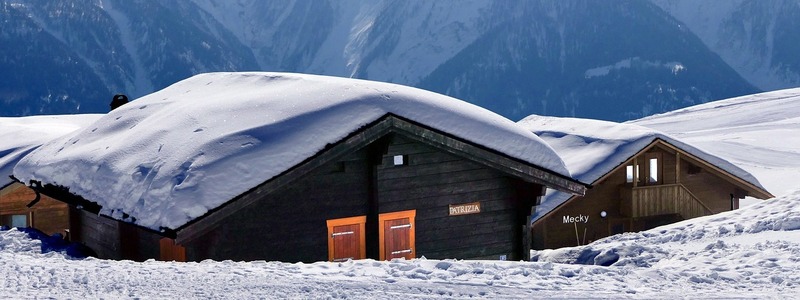
Ideal Temperature for Roof Repairs or Replacement
Roofing materials have specific temperature requirements for installation. Cold temperatures can make shingles and other materials brittle, making them more prone to damage during installation. It is generally recommended to avoid roofing tasks when the temperature falls below freezing (32 degrees).
Professionals have the expertise and knowledge to determine the best temperature and weather conditions for successful roof repairs or replacement. Do not, however, wait for everything to freeze before you call.
Why Not Do It Myself?
There are several reasons not to attempt DIY roof inspections and repairs. DIY inspections and repairs are very unlikely to save you money. They will surely leave issues unaddressed, your roof vulnerable to the elements and may shorten your roof’s lifespan, resulting in an urgent and premature need for roof replacement.
Risk
Walking around on your roof can be extremely dangerous, even for experienced individuals. Professional roofing contractors undergo countless hours of safety training, use special safety equipment to minimize risks, and still, accidents happen. No amount of money saved is worth risking your life.
Don’t hesitate to reach out to our expert team; we have the training and experience to inspect and repair your roof correctly. We know how to spot damage and how to make appropriate repairs to save you from urgently having to pay for things that could be avoided.
Material Warranty
Moreover, manufacturers of roofing materials require a licensed roofing contractor to install their materials for said material to qualify for their warranty. On the off chance you were to tackle your DIY roof repair successfully, you’ll have missed out on these warranties. If and when your repairs go bad, you’ll be stuck paying for more materials or, worse, for a completely new roof.
DIY roof repair isn’t worth the accompanying headache. At B&M Roofing, you get a licensed roofing contractor to perform biannual roof inspections safely.
Allow trained eyes to spot unseen wear and tear. Rest peacefully, knowing that your roof is in good shape as it endures season after season. The peace of mind from a qualified licensed contractor’s genuine interest in your well-being is abundant.
What Roof can Withstand Extreme Weather?
Some roofs fit into snowy conditions in Colorado more than others.
- Metal roofs can handle heavy snow and allow it to slide off easily.
- Cement roofs, although less common due to their cost, offer great protection against snow. They are durable and can resist moisture.
- Slate roofs are both beautiful and strong, capable of withstanding snow and ice. However, slate is expensive.
Overall, these roofs provide durability and resilience against the snowy weather conditions in Colorado.
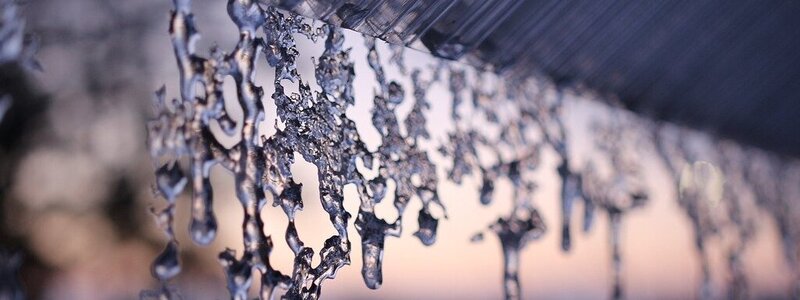
Inspect and Prepare
Preparing your roof for winter is essential for its longevity and for protecting your home from the elements. Adhering to temperature guidelines while planning roofing tasks ensures optimal results. With proper preparation, your roof will withstand the winter season, providing you with peace of mind and a comfortable living environment.
Our professional team has the experience to inspect, repair and replace your roof. Contact us to discuss how we can help you, schedule a convenient time to visit your house, and allow our team to give you customized solutions.
B&M Roofing Colorado’s Most Trusted
If you think it’s time to replace your roof, regardless of the size of your home, this is an important decision that you should not rush into. You need to make sure you choose the right roofing installation company, that the roof is installed correctly and that the weather cooperates during the replacement process.
For more information about roof maintenance, repair, or replacement. Call us at 303-816-0068 or fill out a contact form.





































